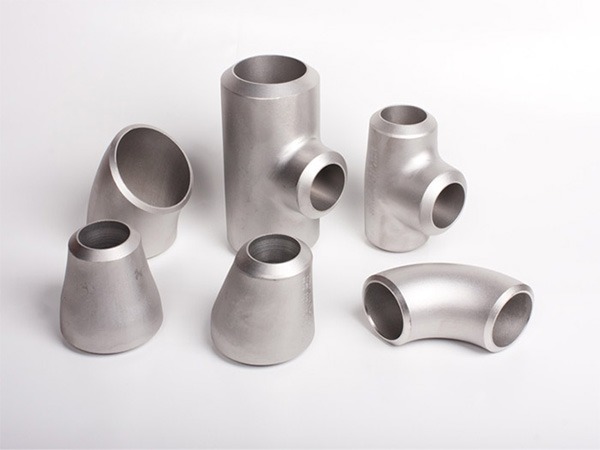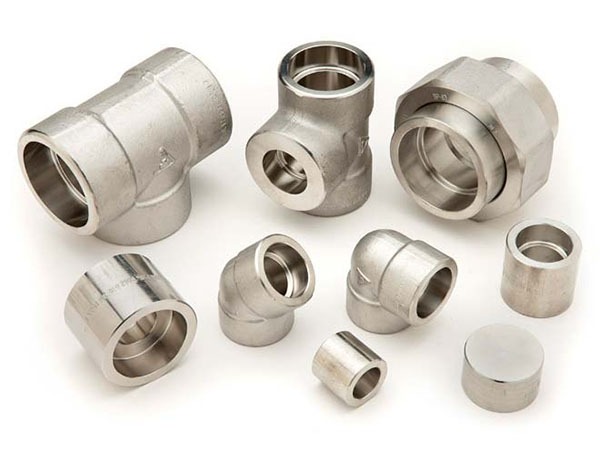What are butt-welded pipe fittings and in what situations are they used?
Butt-welded pipe fittings are pipe connection components in which the pipe ends or the bevels of pipe fittings are directly welded together with a full penetration butt weld (CJP). They are usually composed of standard shapes such as elbows, tees, reducers, and heads. Its production and application strictly comply with ASME B16.9 and ASME B16.25 standards, and the materials include carbon steel, stainless steel, alloy steel, etc.

Welded pipe fittings have high strength and can withstand high temperatures, high pressures, and corrosive media. They are suitable for high-pressure environments where pipes need to be connected
Outstanding performance. They are widely used in heavy industries such as petroleum, chemical engineering, natural gas transportation, nuclear power, and shipbuilding, ensuring the stable operation of pipeline systems under high-load conditions. In addition, due to the fully penetrated weld seam characteristics of butt-welded pipe fittings, they offer excellent sealing performance, effectively preventing medium leakage and meeting strict industrial safety standards.
What are socket welded pipe fittings?
Socket welded pipe fittings usually have a prefabricated groove inside. By inserting the steel pipe into the groove, a thermal expansion gap of approximately 1/16 "(1.6 mm) should be left, and the connection part is fastened by external fillet welding. It is a high-pressure forged steel pipe fitting.

Socket welding is usually used for welding pipes with smaller diameters. The process is simple and the installation is quick.
In what aspects are butt-welded pipe fittings superior to socket-welded pipe fittings?
1. Applicability to size and pressure rating
Butt-weld pipe fittings can cover a size range from ½ "to over 48", and their pressure ratings can match ASME B31 series standards (such as ANSI 150 to 900 or higher) according to the pipe wall thickness and material, offering almost unlimited size adaptability and high-pressure applicability.
Sock-weld pipe fittings are typically produced in Class 3000, 6000, 9000 (3000 PSI/ approximately 20.7 MPa, 6000 PSI/41.4 MPa, 9000 PSI/62 MPa) grades, with a size cap of up to 4 inches. In actual projects, the size is often limited to within 2 inches (NPS 2).
2. Mechanical strength and fluid properties
| Socket-Weld | Butt-Weld | |
| Weld type | External fillet welding, no root penetration | Full penetration butt weld |
| Weld strength ratio | Only approximately ≈ 50% of the base strength (limited by fillet soldering) | The matrix strength can reach 100% (Joint Efficiency = 1.0) |
| Smoothness of the inner wall | There are socket step differences on the inner wall, which interfere with flow and are prone to dirt accumulation | The inner wall is almost the same as the pipe, with low fluid resistance and high cleanliness |
| Fatigue and crack sensitivity | The initial stress is concentrated at the edge of the socket, with poor fatigue resistance and a tendency to crack | No stress concentration (saving SIF = 1.0), excellent fatigue resistance |
| Corrosion performance | Media may accumulate in the socket, which can easily lead to crevice corrosion | The inner wall has no gaps and flows smoothly, significantly reducing the risk of corrosion |
3. Construction techniques
Butt-Weld: The pipe ends should be prepared with a 30° or 37.5° chamfer (depending on the wall thickness and welding method). The overlapping part must be precisely centered and usually requires the use of a Backing bar or backside gas protection to ensure complete penetration. To obtain high-quality weld seams, stable fixtures, skilled welders and professional welding machines are indispensable.
Socket-Weld: The pipe ends only need to be cut at right angles, no chamfering treatment is required. Just keep the surface clean and no precise alignment is needed. The construction efficiency is high and the requirements for material coordination are relatively loose. It is suitable for occasions with limited space or poor mechanical positioning accuracy, and is convenient for construction.
4. Test Requirements - Support 100 % RT/UT
Butt welding: Smooth weld bead, open on both sides, meeting the requirements of 100 % radiographic (RT) or ultrasonic (UT) testing, suitable for ASME B31.x system, nuclear power or clean industry.
Socket welding: The socket geometry restricts ray penetration. Only PT/MT (penetrant or magnetic particle) testing is conducted, and Joint Efficiency cannot be accepted as 1.0.
Summary
If the project has strict requirements for strength, fatigue life, system integrity, fluid cleanliness and testability (such as nuclear power, petrochemical main processes, food-grade systems, ultra-high pressure pipelines, etc.), butt-welded pipe fittings are far ahead and are truly the preferred connection pipe fittings for critical systems.
Read more : Butt weld pipe fittings

